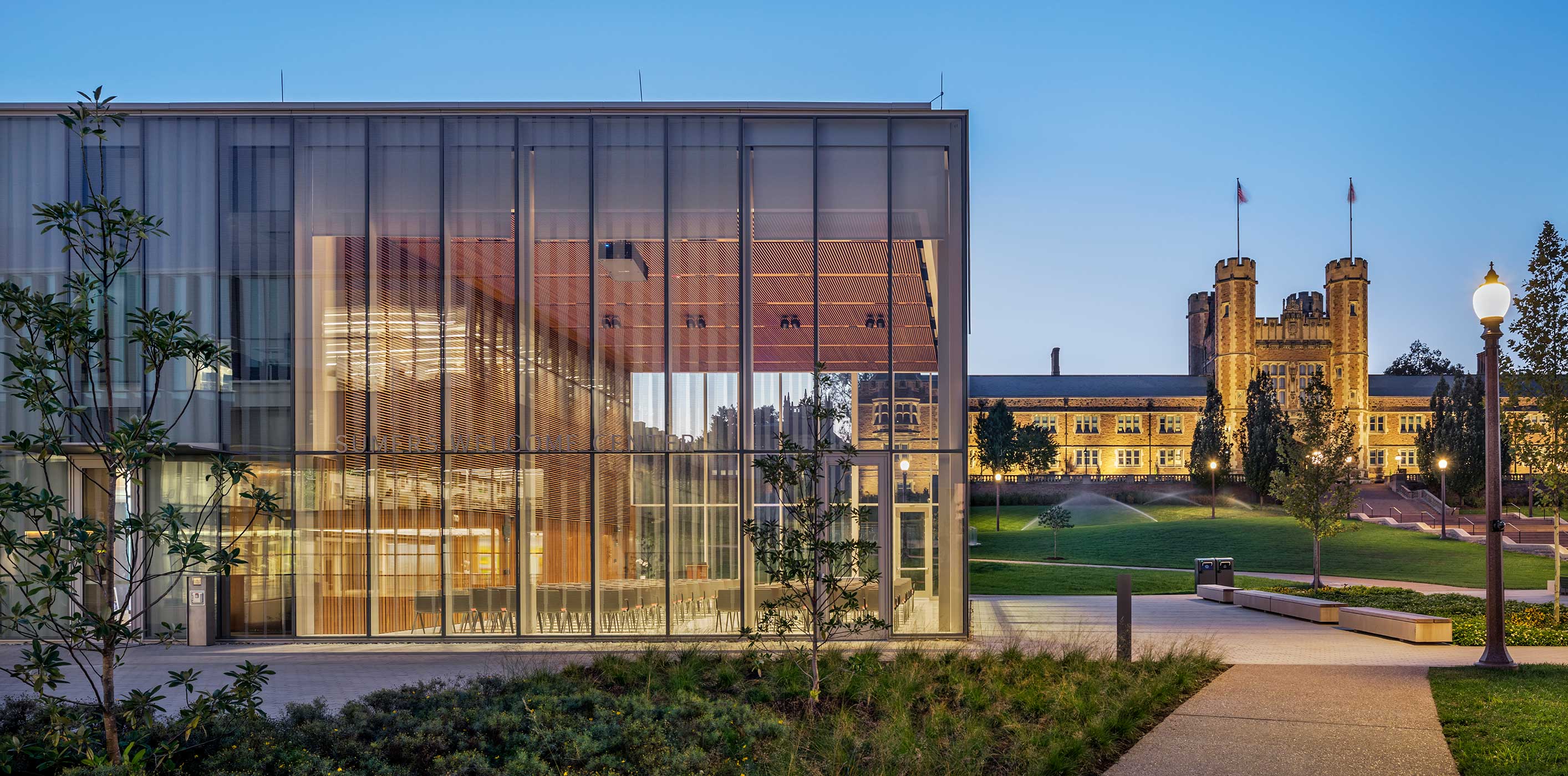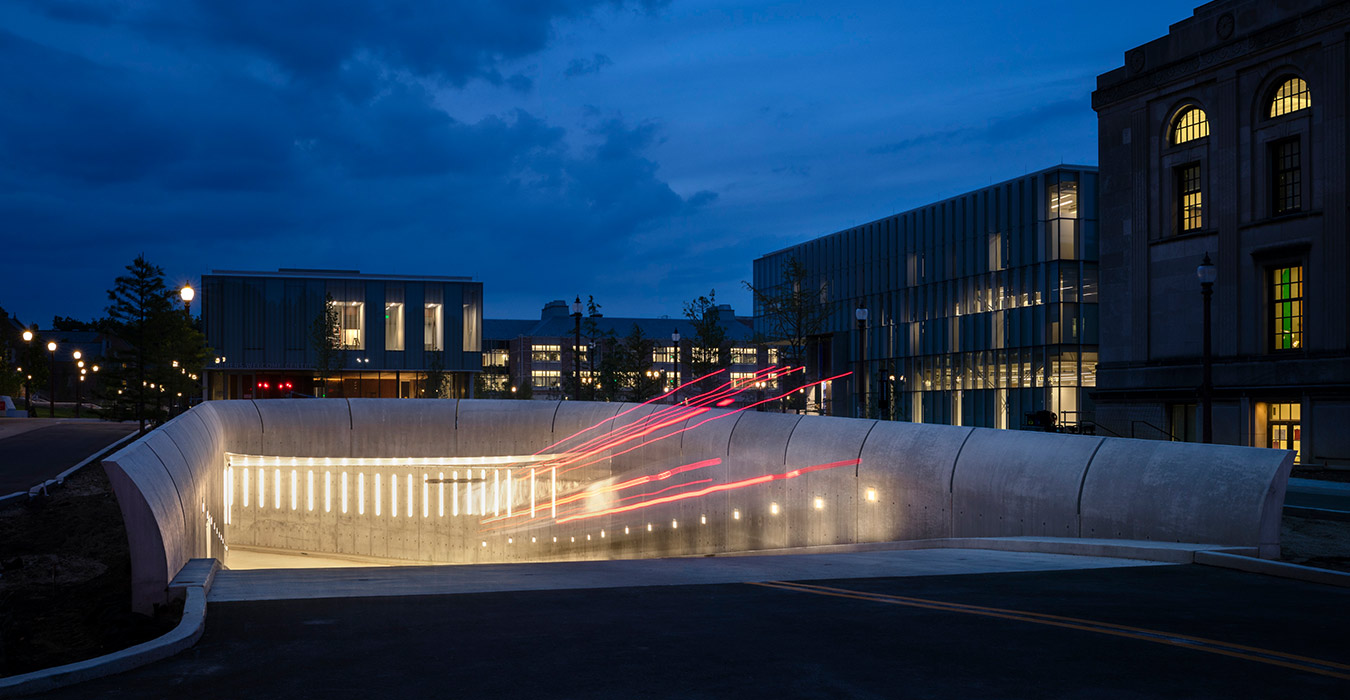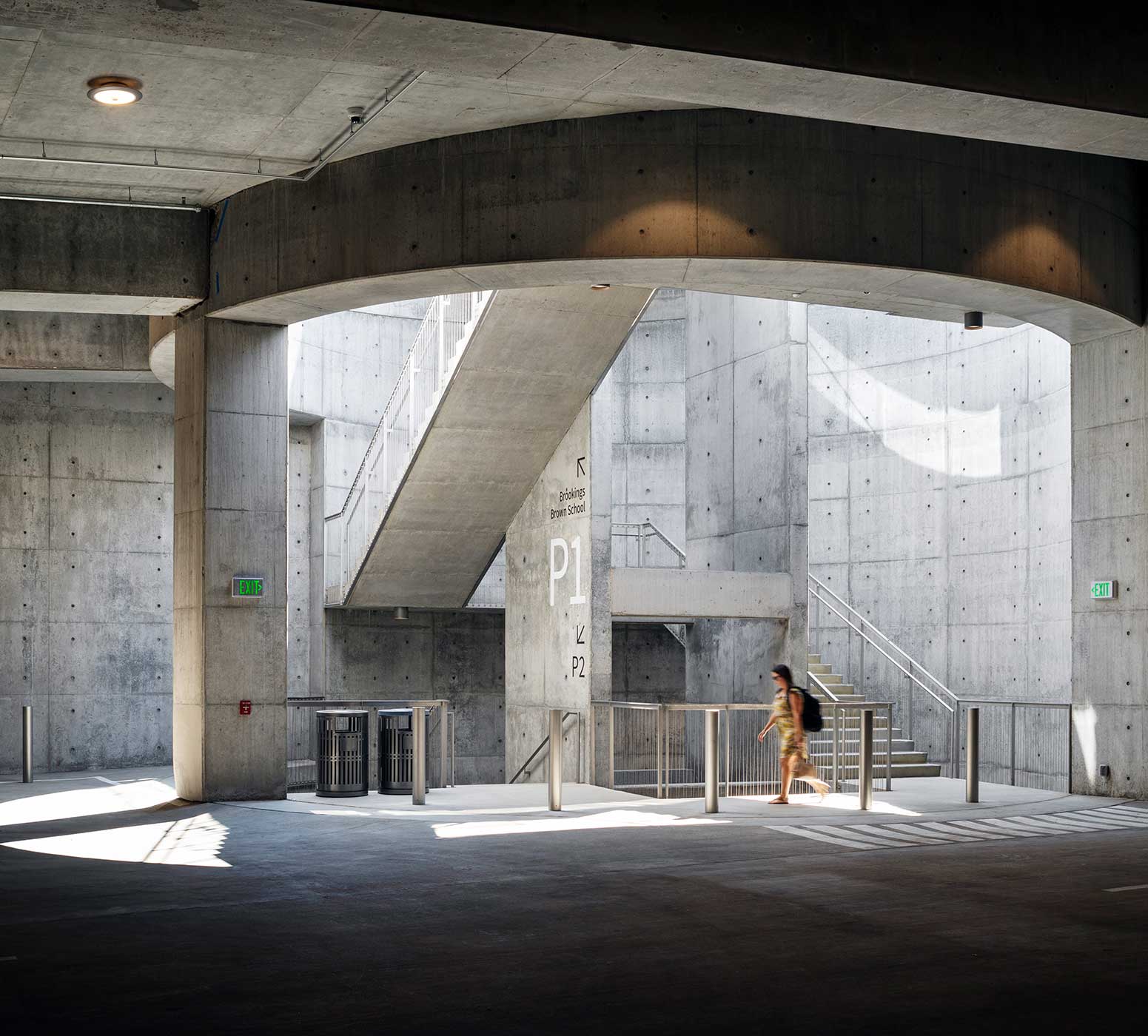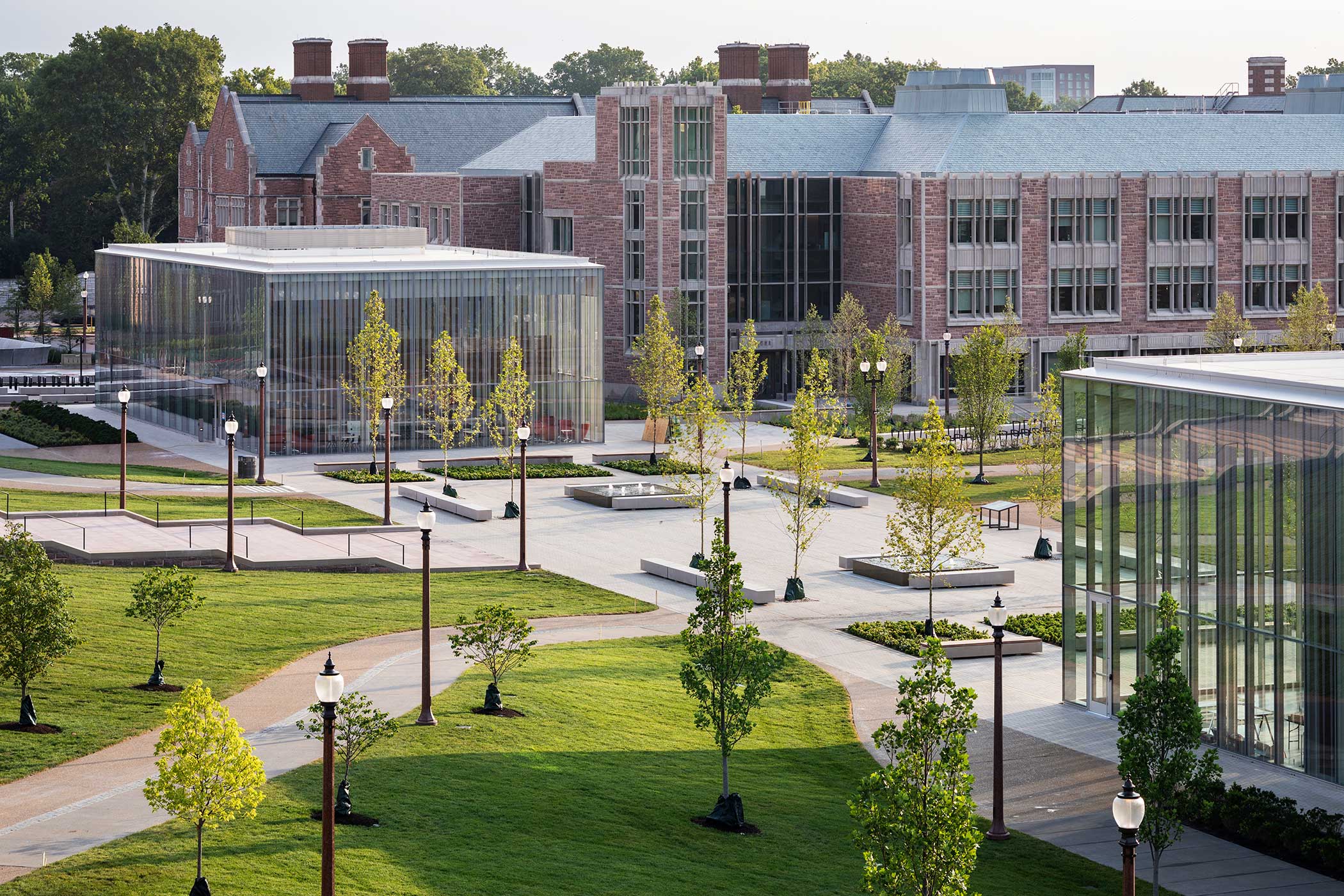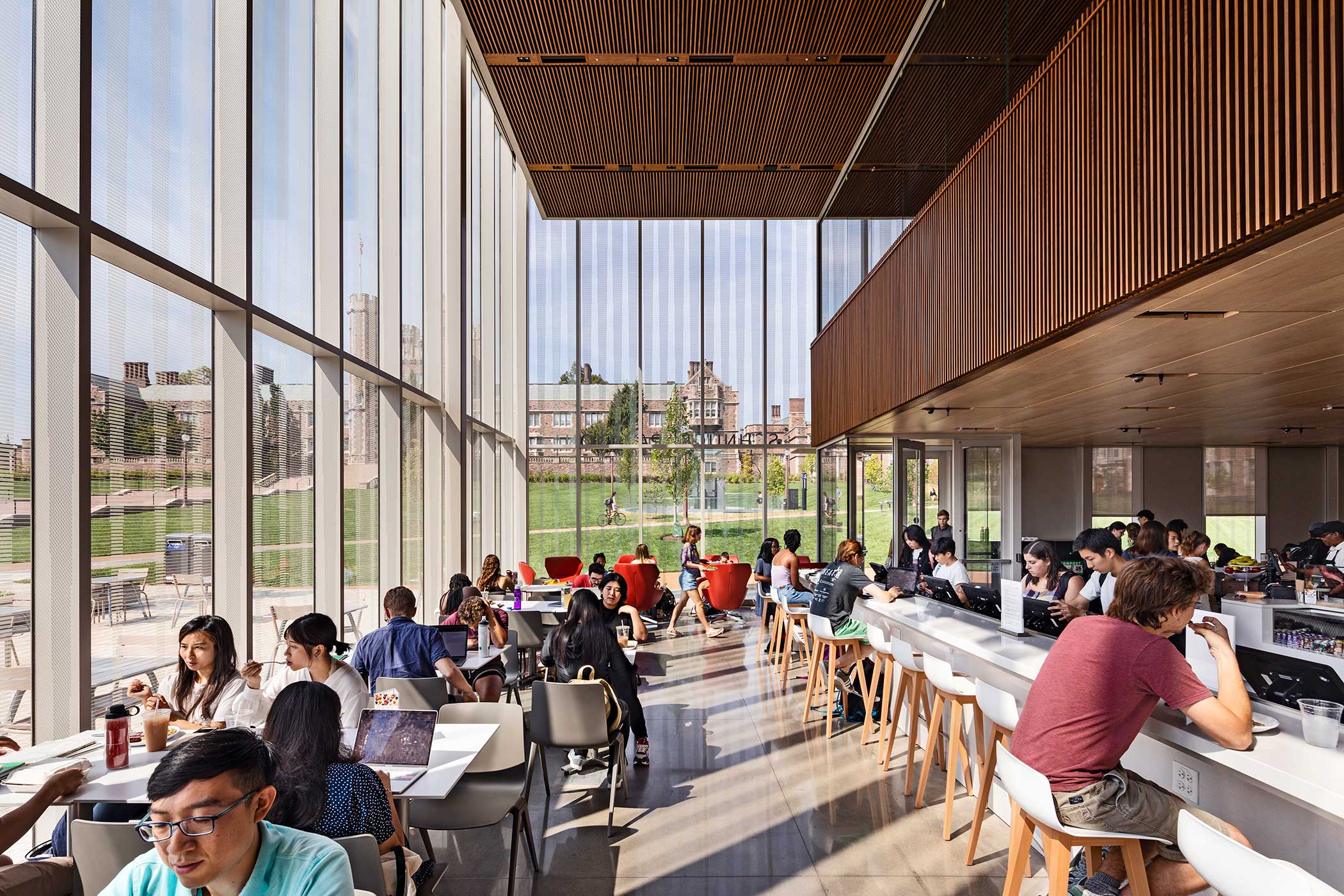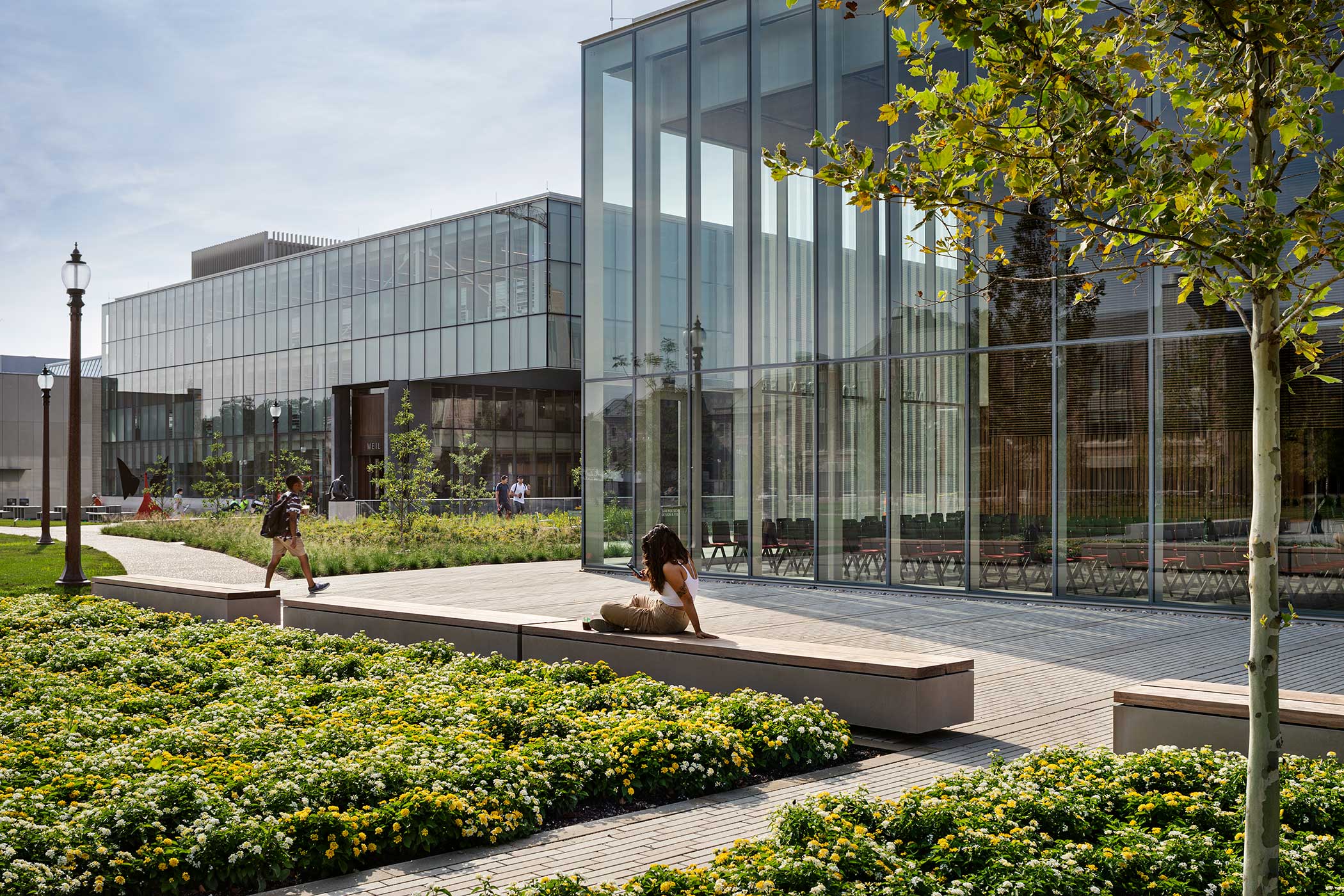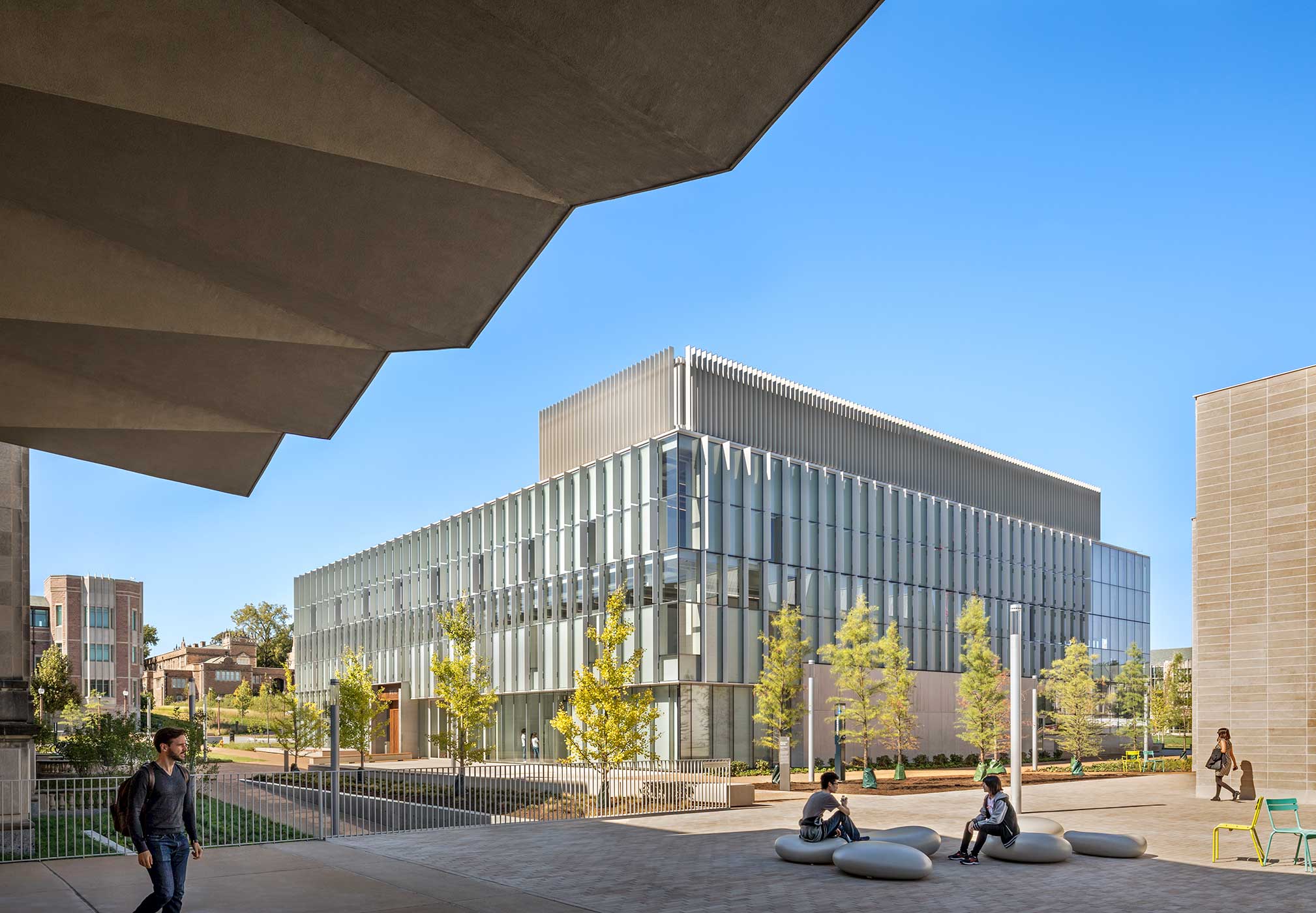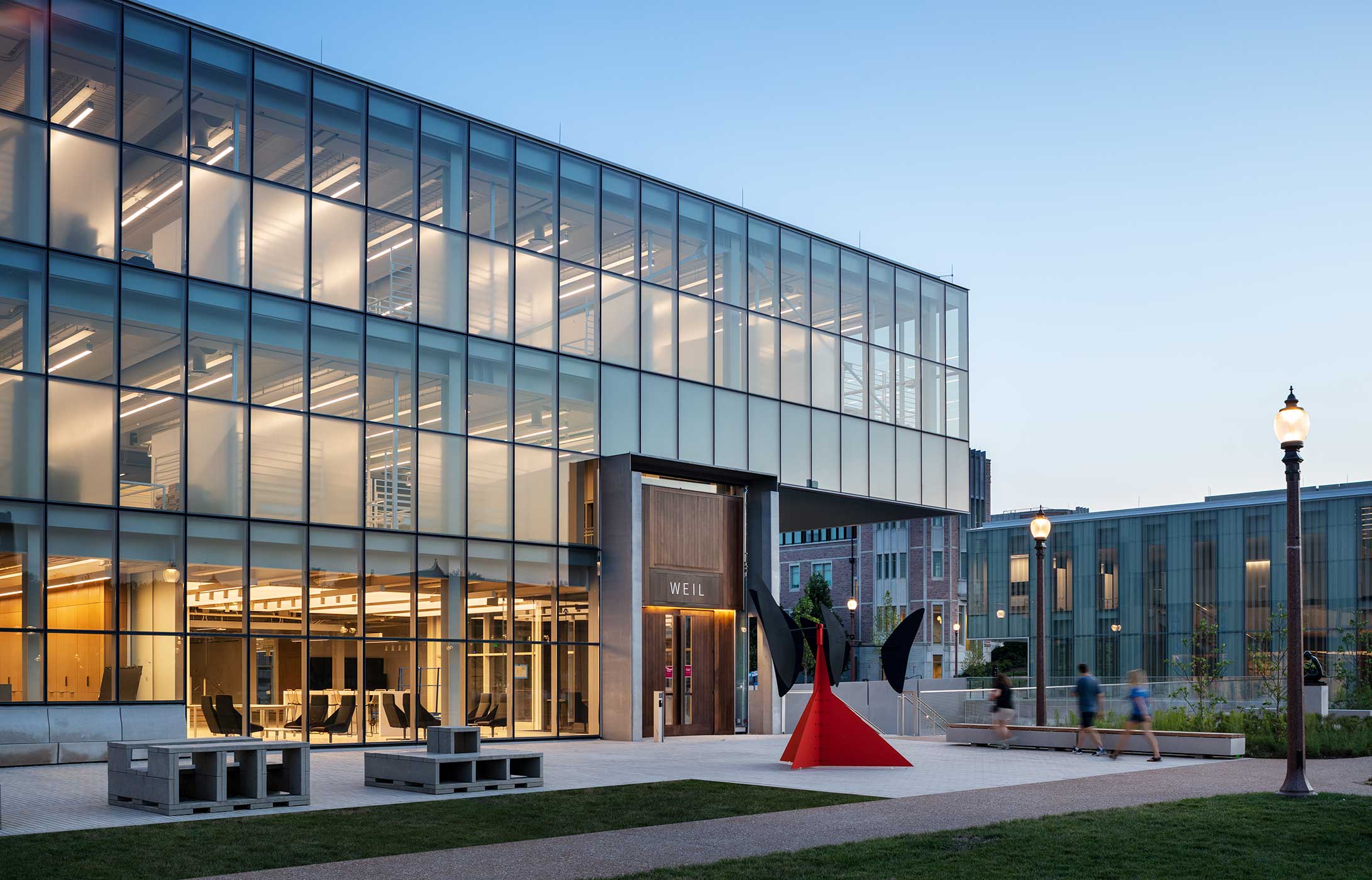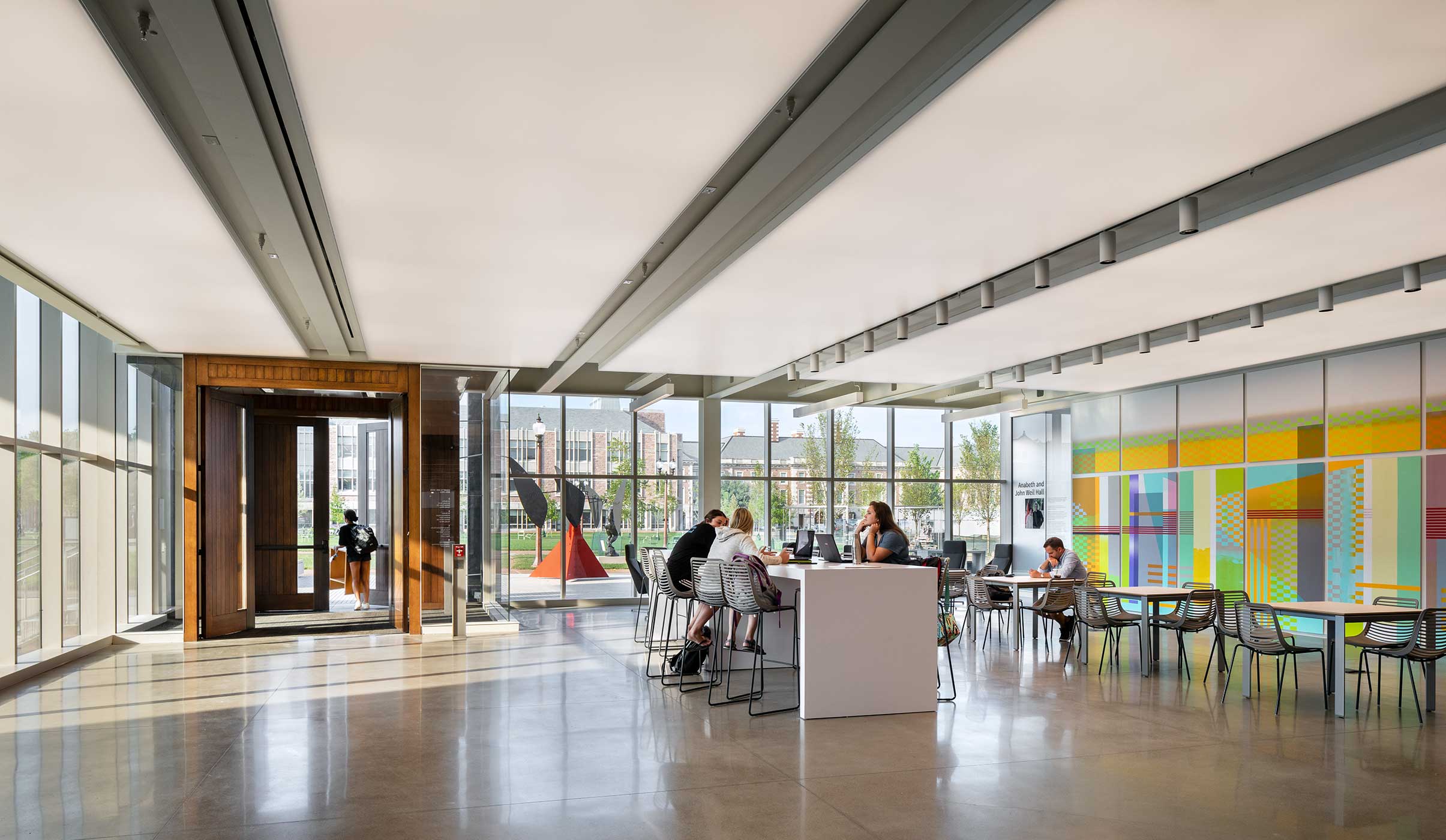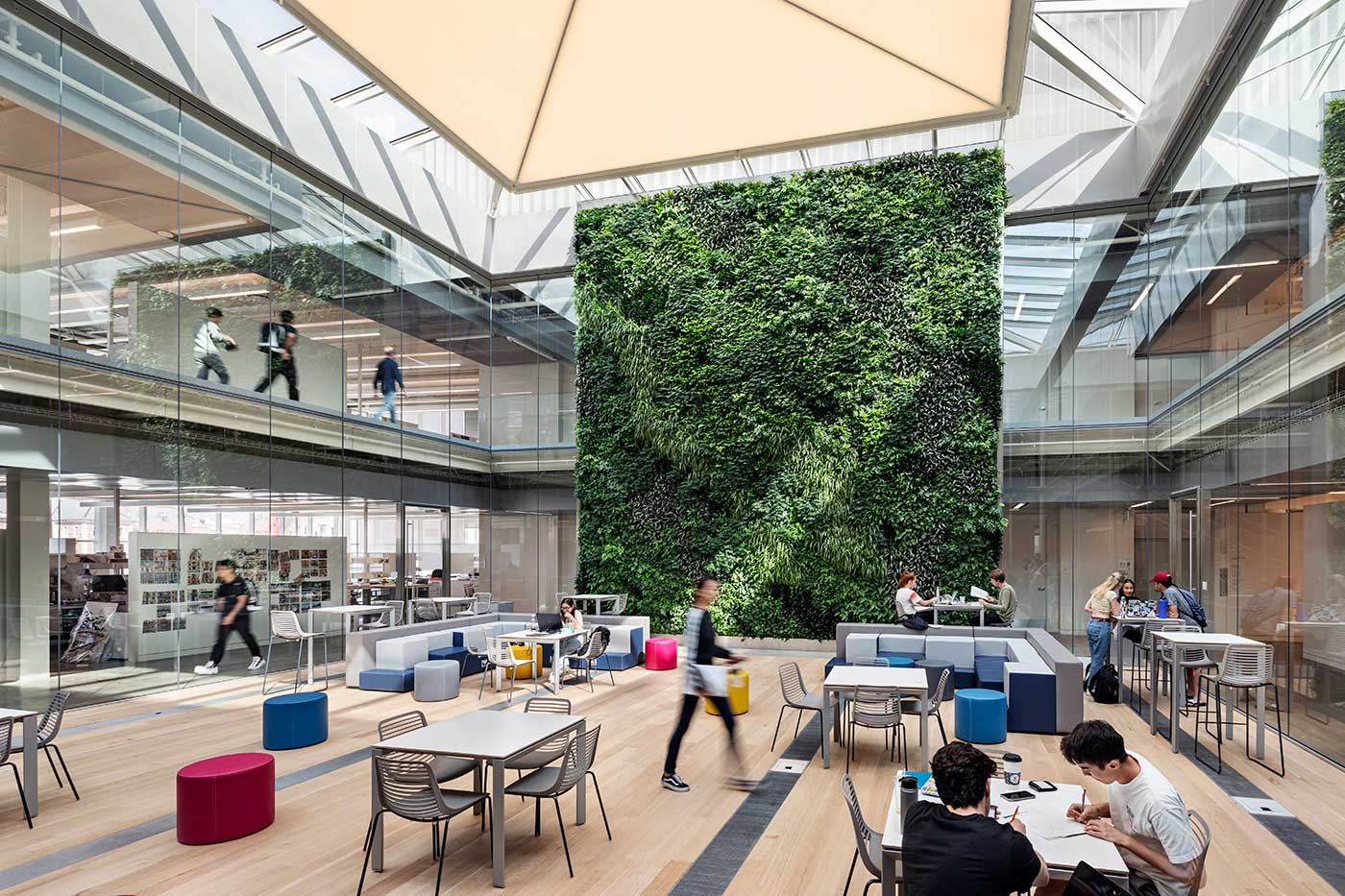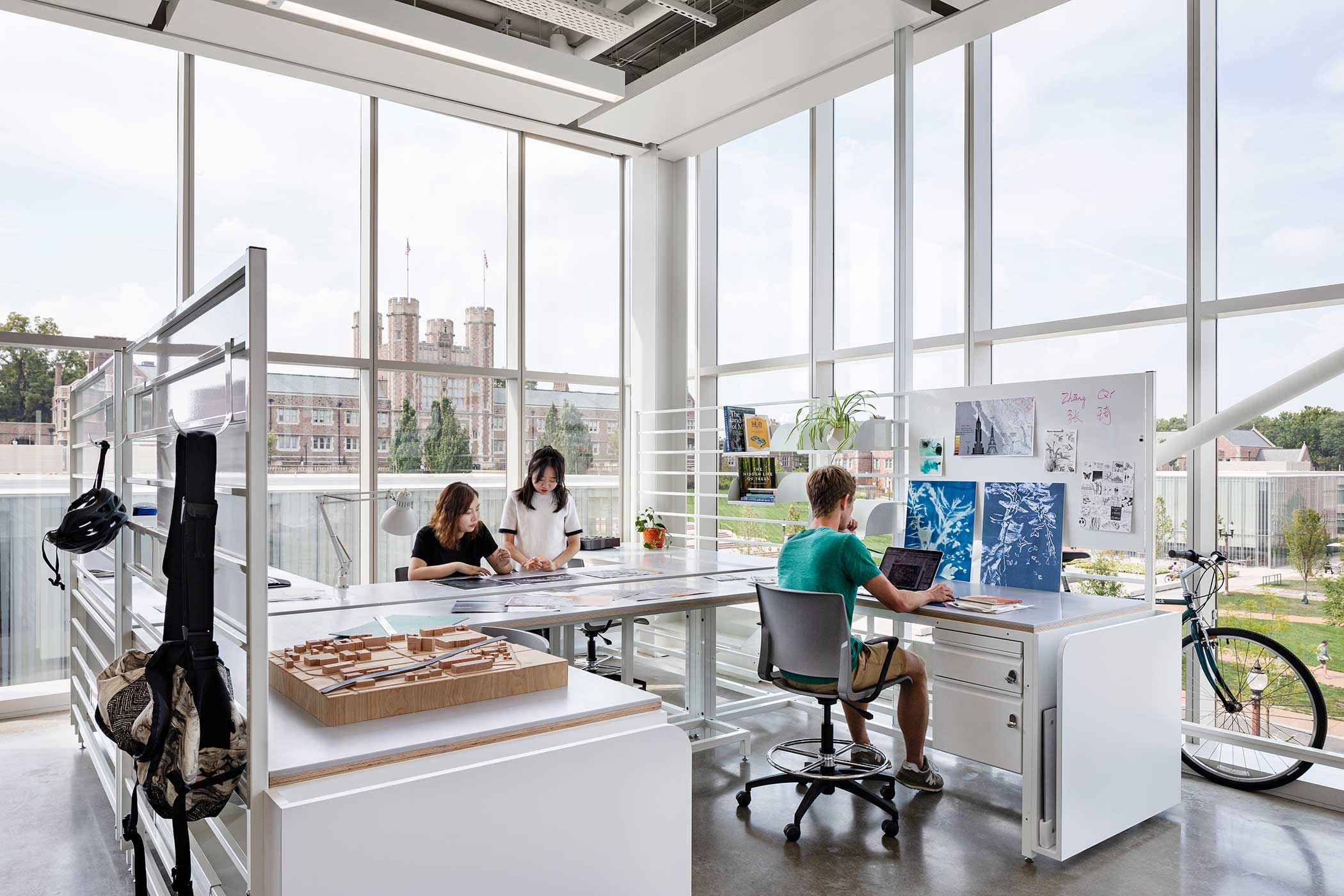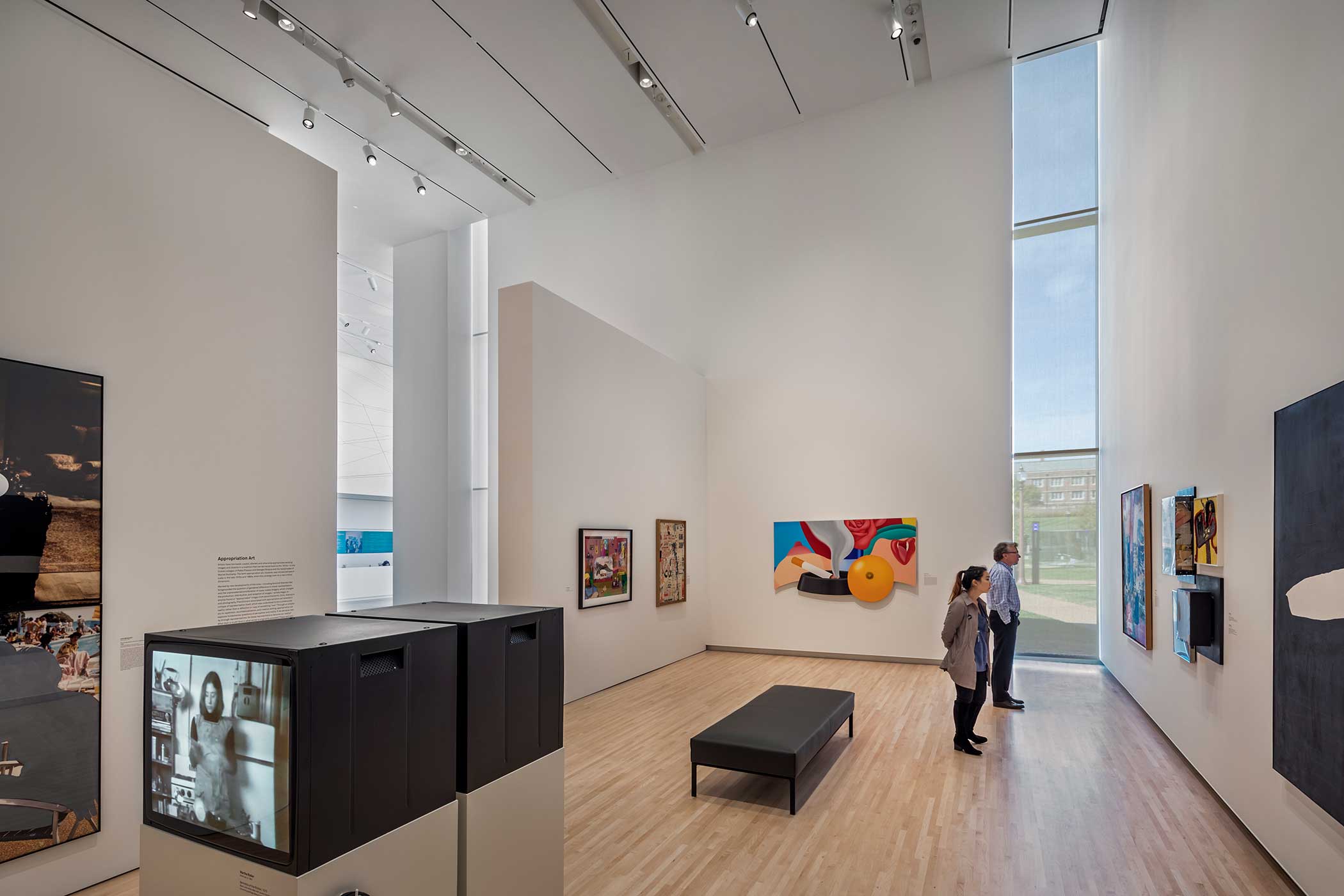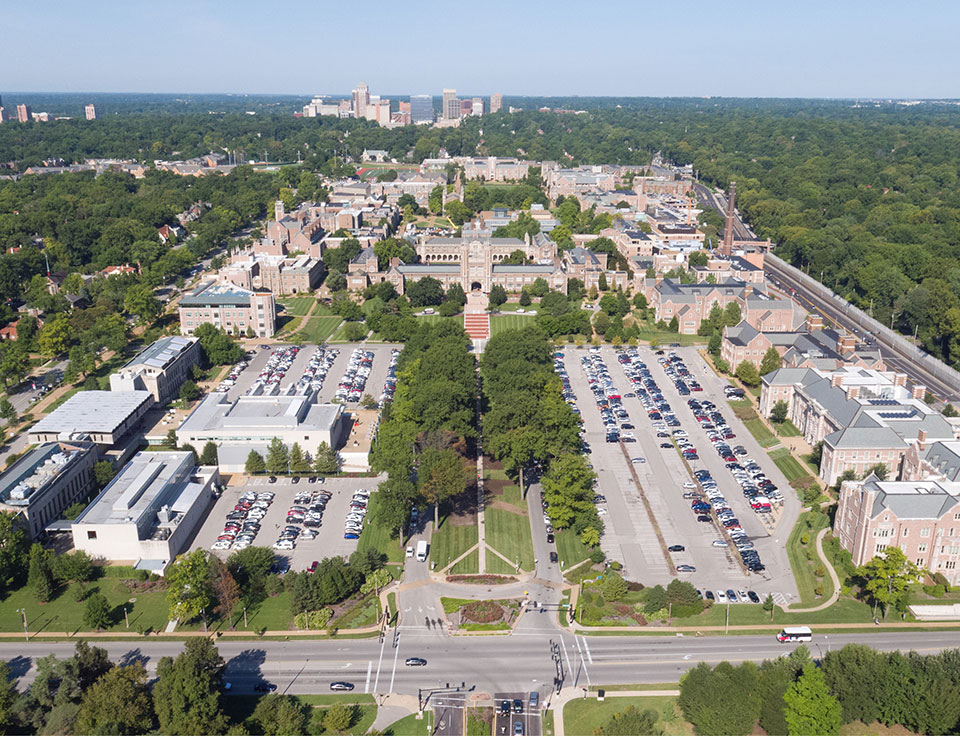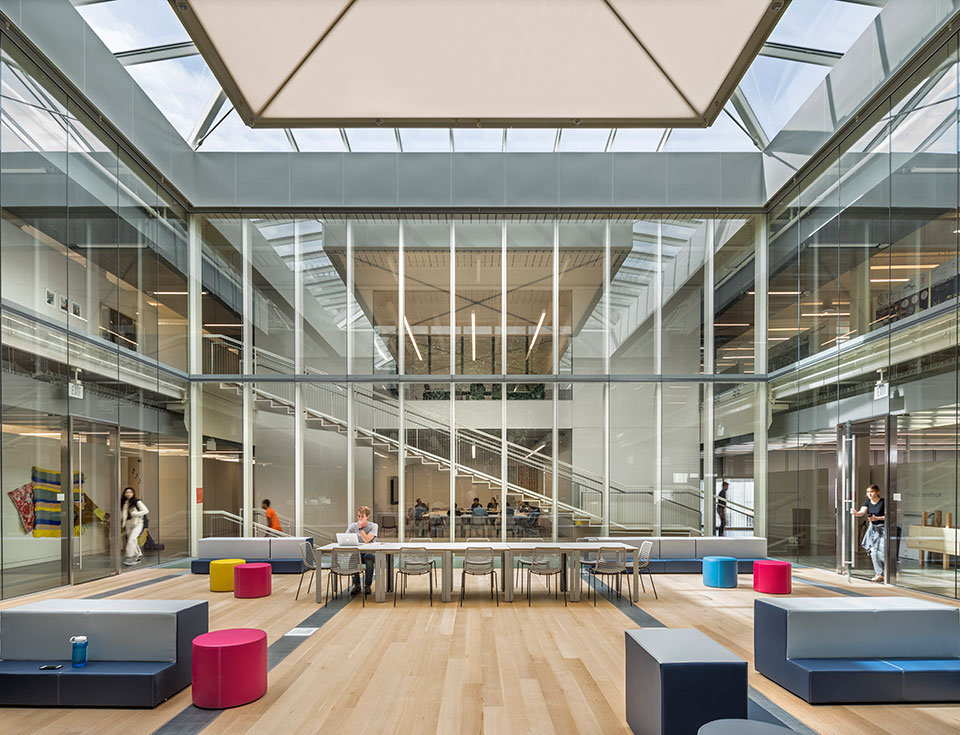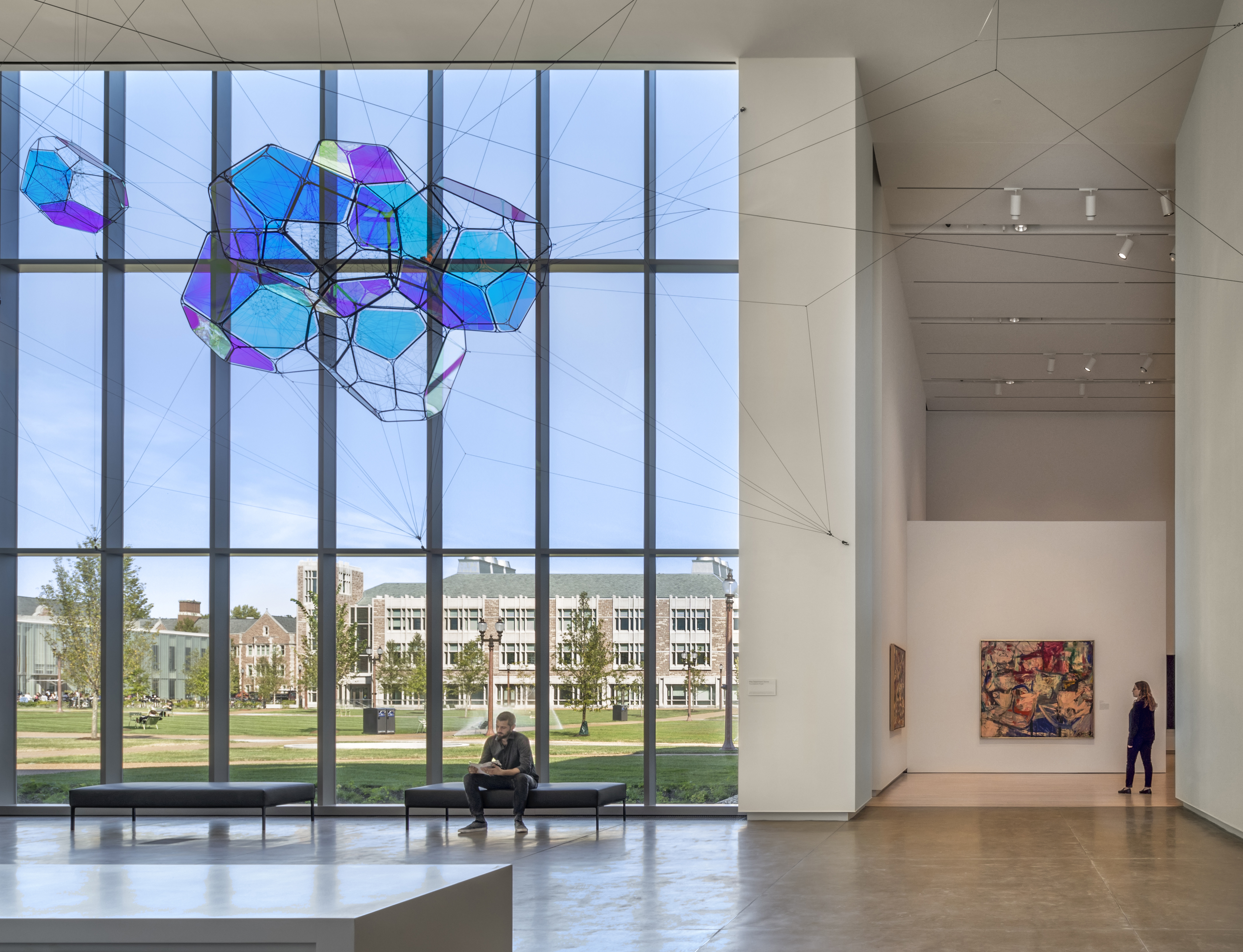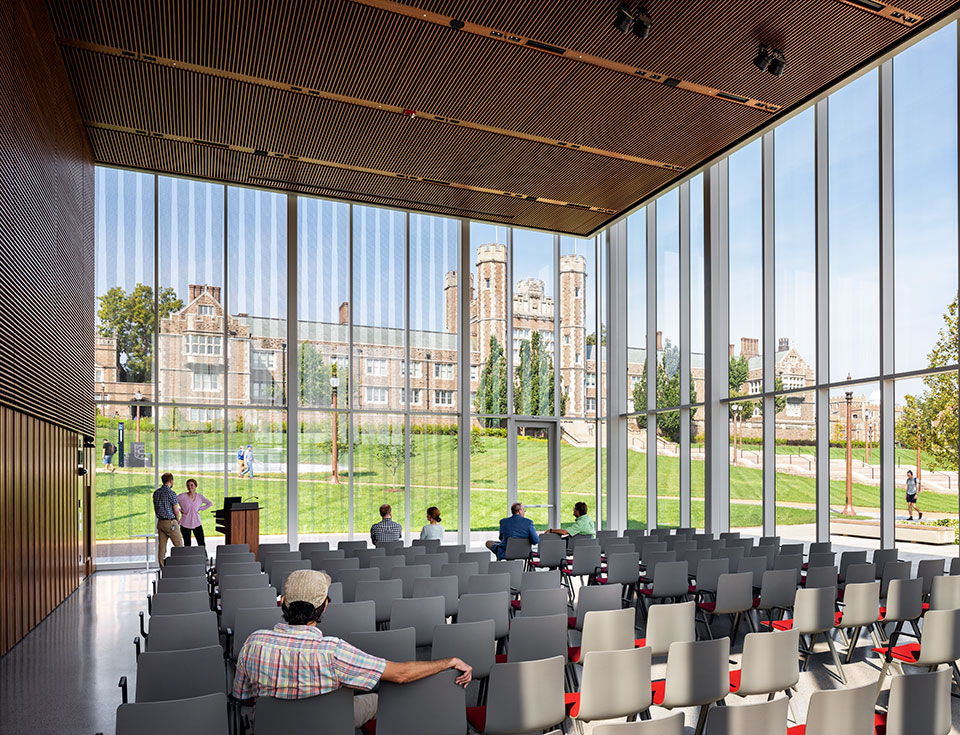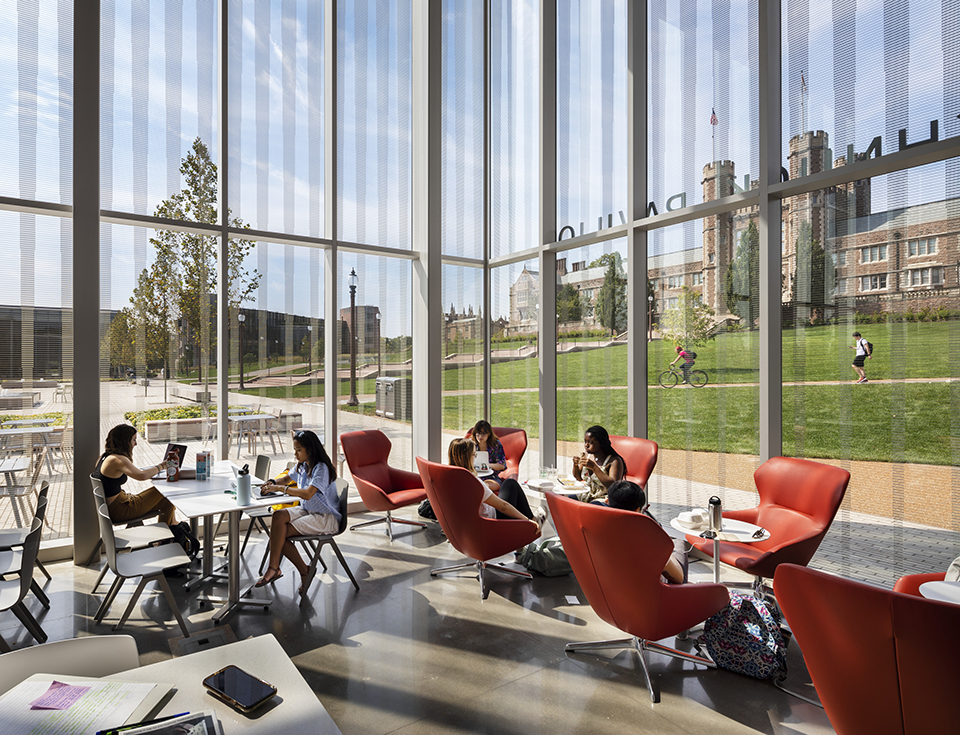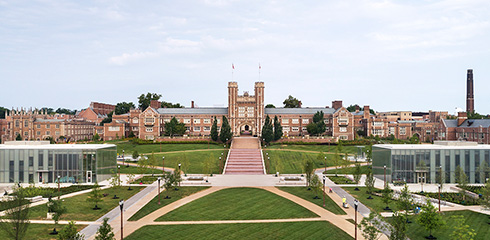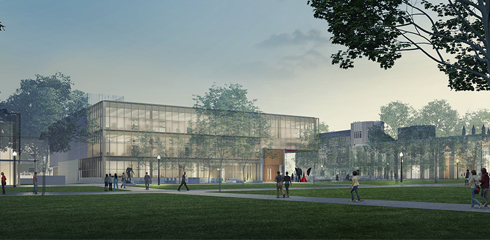The East End Transformation replaces roads and surface parking lots shown here with green space and new buildings.
©KieranTimberlake/studioAMD
How can we bring a unified, contemporary identity to a revered campus neighborhood?
The Danforth Campus at Washington University in St. Louis was designed by Cope & Stewardson in 1900. It is defined by Collegiate Gothic buildings, landscaped quadrangles, and pathways that encourage academic connections in a beautiful park-like setting. But over time, Danforth's East End of campus had become plagued by roads and parking lots, interrupting this original planning vision.
In 2015, Washington University embarked on a major campaign to transform the East End into a vibrant and inviting gateway to the university. The car-centric site has been turned into a major new campus landscape framed by new buildings and pedestrian circulation in front of Brookings Hall, the campus's landmark main building. Hundreds of surface parking spaces are now underground in the 790-space East End Garage, creating an expansive new park above. Five new buildings strengthen academic connections, enhance campus green space and circulation, and improve accessibility. Five of the eight major components in this capital campaign were designed by KieranTimberlake and completed in 2019.
HIGHLIGHTING ART AND ARCHITECTURE
The Sam Fox School of Design & Visual Arts is one of the top programs for art, architecture, and design in the country. Anabeth and John Weil Hall, a new building for the school, embodies the university's commitment to creativity in the 21st century. The new building includes flexible, naturally lit lofts for classes and studios, all of which are positioned around a digital fabrication shop and a light-filled central courtyard with a towering green wall. Glass walls allow views between studio spaces, building a feeling of community among artists and designers. Meanwhile, a mural wall in the Commons features new work by alumni each year. In centering its studio spaces around the fabrication shop and courtyard, Weil Hall's design inspires the university's multidisciplinary scholarship, creative activity, and innovative research.
Weil Hall's sky lit interior court provides an inviting and casual gathering place for students and faculty of the Sam Fox School of Design & Visual Arts.
© Peter Aaron
A major expansion of the Mildred Lane Kemper Art Museum increases exhibition space for varied and outsized art and allows the museum to permanently display a larger portion of its world-class collection. The gallery's striking new stainless steel exterior reflects the dynamic movement of campus and sky while the double-height, glass-lined lobby opens up an introverted building. The lobby offers expansive views of Brookings Hall, the campus's landmark building, as well as the museum's sculpture garden and Tisch Park, a new green space that replaces much of the East End's surface parking lots.
The Kemper Art Museum's double-height lobby frames expansive views of Tisch Park and the engineering school.
© Peter Aaron
STRENGTHENING CONNECTIONS
The Gary M. Sumers Welcome Center, a new building for Undergraduate Admissions and Student Financial Services, is the first stop for visitors and prospective students. The glass-enclosed building was designed to put the Welcome Center's activity on display in addition to giving visitors upfront, personal views of the school's distinct landscape, including the new Tisch Park, and Brookings Hall.
The glass-enclosed presentation space inside the Sumers Welcome Center provides views of Brookings Hall and the activity of the East End.
© James Ewing/JBSA
Sumers' companion building, the Craig and Nancy Schnuck Pavilion, houses a large café and a bike hub in addition to the university's Environmental Studies Program and Office of Sustainability. Together, the two new glass pavilions frame the towers of Brookings Hall beyond. A new underground parking garage allows nearly six acres of impervious surface parking to be replaced with lawns, trees, and plantings. It also orients visitors, increases access to the new East End, and promotes low-carbon transportation by providing electric vehicle charging stations, designated car-share parking, and a campus shuttle stop.
The Schnuck Pavilion offers sweeping views of Brookings Hall, the school's flagship building.
© James Ewing/JBSA
While remaining faithful to the original Cope & Stewardson plan, each of these buildings embodies a vibrant, contemporary approach to materials, technology, and sustainability. By emphasizing long-term flexibility, sustainability, and welcome, the newly built spaces ensure a unified and well connected East End for generations to come. They also reflect a redoubled commitment to art and design and the important roles both play at a private research university.


